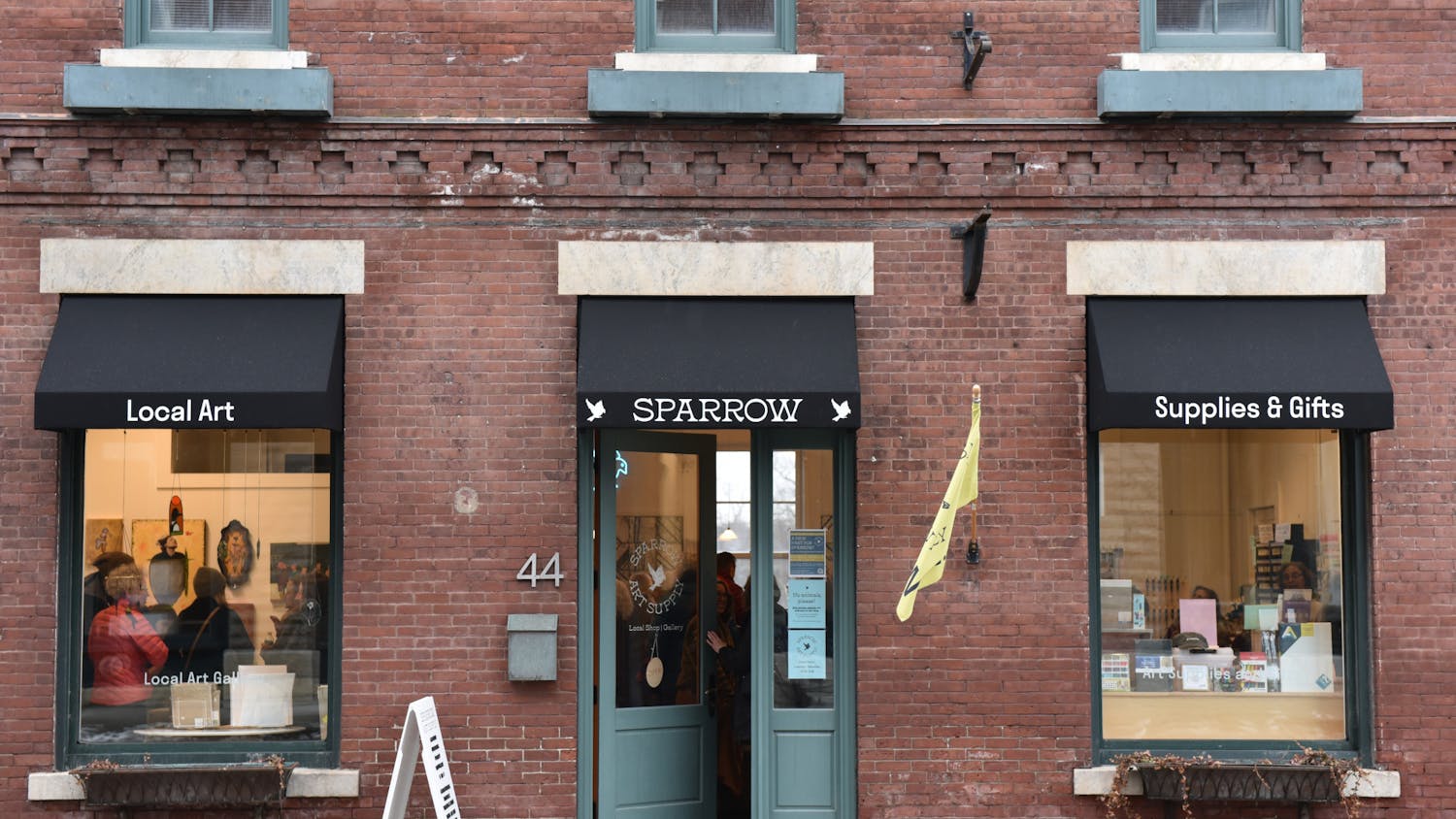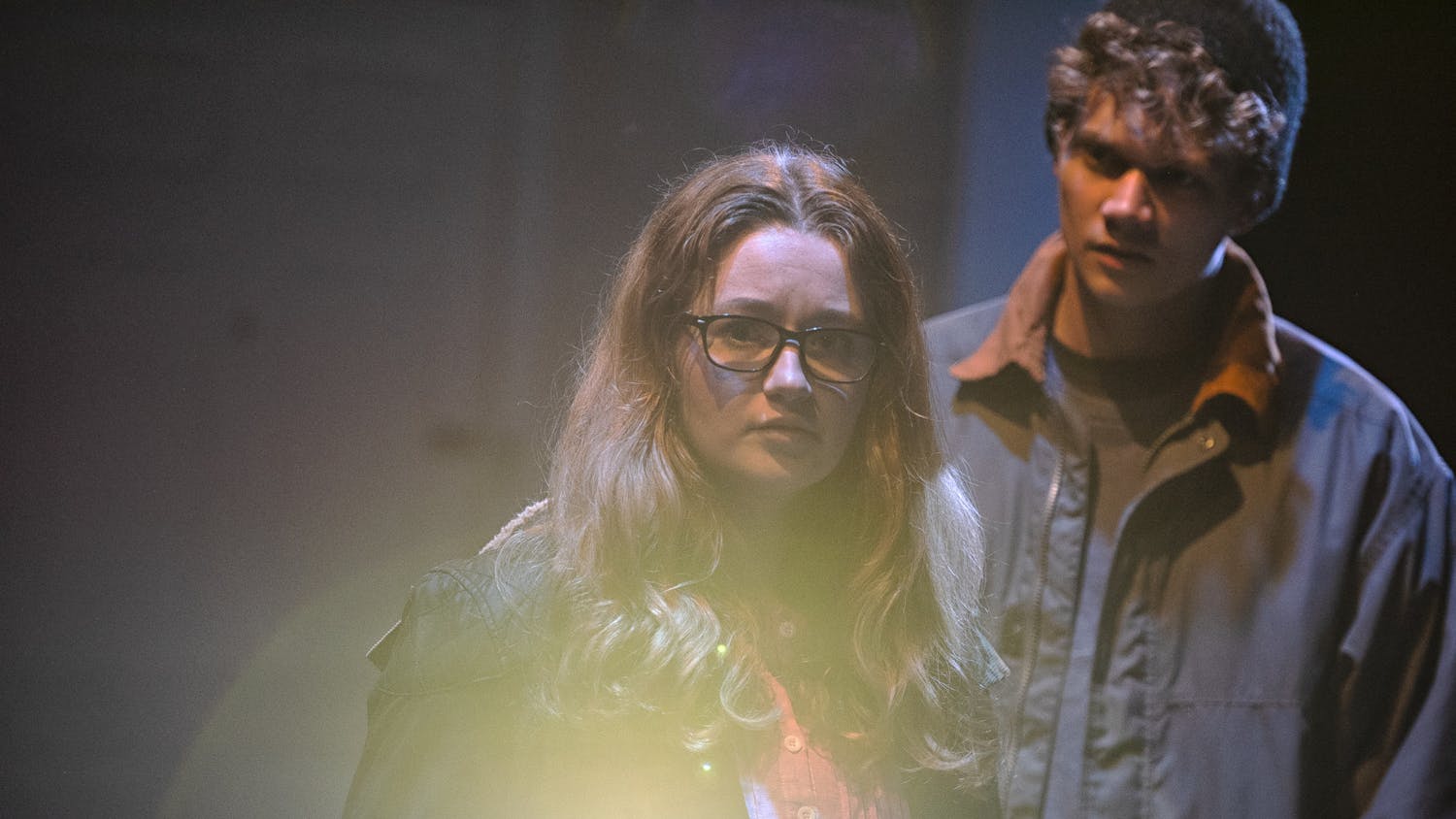On April 16 and 17, sold-out audiences in the MCFA Dance Theatre were treated to “Walking the Curb,” featuring senior independent work from Elizabeth Boles ’10, Philippe Bronchtein ’10 and Sophia Levine ’10.
One was immediately introduced to the ethereal, surreal quality that would carry throughout the evening by large, billowing white constructions rigged from the ceiling. Designed by joint Environmental Studies and Architecture major Evan Daniel ’10, these cloudlike paper objects greatly contributed to the overall visual success of the first piece. Levine’s choreographic work
“And then there were three.” opened the show. Soft gold and lavendar-colored lights rose onto the choreographer in a pink dress, squatted in a deep, strong plié. Throughout the piece I was moved by the contrast of her almost childlike costume to her graceful, mature, intentional movement style.
The piece featured Otto Pierce ’13 and Michael Baker ’13 as aesthetic complements — they wore white shirts and beige slacks, and generally functioned as support and as interesting counterparts for Levine.
Tahis was reaffirmed in Levine’s solo, co-choreographed by her and Kathleen and William F. Truscott Professor of Dance Andrea Olsen, which was a series of quick phrases, repeated and subverted for almost 5 minutes. Levine’s dancing was truly impressive — graceful, skillful, and overall a real joy to watch.
Pierce and Baker entered stage left, and concluded the piece with phrasing from the beginning and then three simultaneous solos that seem almost unrelated save in movement quality and style. Levine finished in the same downstage right corner, looking back over her shoulder.
Seemingly a study in physical and visual counterparts with Levine as the anchor, “And then there were three.” should have perhaps been titled, “And then there was one.”
After a pause as the sculptural stage was disassembled, “COM,” Bronchtein’s choreographic effort, began.
Immediately impressive when one noted that Bronchtein had composed the music in addition to the dance, this piece was perhaps my favorite of the evening. With a near-perfect ensemble featuring Christian Morel ’11, Lilah Leopold ’12.5, and Hannah Pierce ’13, Bronchtein explored the juxtaposition of atypical and traditional movement styles. The dancers behaved robotically, sometimes finding themselves mechanically stuck in the same movement for several seconds, and sometimes becoming almost human with expressive faces and relationships. The blend of human emotionality and mechanical, programmed apathy is confronted in the most affecting moment of the piece, when, center stage, Morel malfunctions, revealing his actual vulnerability and helplessness, and Pierce tenderly comforts him.
Bronchtein’s accompanying music provides an excellent addition, sometimes simply complementing the dancers, while occasionally building until it overwhelms the action on stage and manages to redirect the movement onto a new dramatic level. Overall, the choreographic motifs and themes present in “COM” were impressive and complex, acting as a poignantly appropriate culmination of Bronchtein’s academic focus on the relationship between technology and humanity.
Levine and Bronchtein took the stage next, with “An Improvised Duet.” It was a brief and enjoyable piece, with both dancers clearly in tune with one another, physically fit and experienced in improvisation, but what was most impressive was the collaboration between the improvisation of lighting design by Jennifer Ponder and music program created by Bronchtein.
The program recognized the presence of light and dark in different portions of the stage, so Ponder’s lighting decisions directly informed the music that the dancers worked with. This original setup was both interesting to watch, and technologically mind-boggling.
The final piece was Boles’ “pilgrimage of all things broken,” featuring a large cast consisting of Boles, Sarah Chapin ’12, Sonia Hsieh ’10.5, Jessica Lee ’13 and Catherine Miller ’11. A real theatrical production, the work included elaborate costumes, spoken word, a large trunk and several violin interludes played onstage by Hsieh. The dance functioned as a culmination of Boles’ Anthropology and Dance joint major, considering the physical embodiment of culture. Less traditionally pleasing than the other three pieces, this work involved a repeated Urban Dictionary definition of the word ‘bitch,’ the occasional growl, and complex, seemingly disparate characters and story lines.
One is still led to believe that the five women embody something complete and unified — perhaps all exaggerated aspects of one woman. The presence of spoken word in both English and Spanish detracted from the complex movements that were taking place as one’s focus necessarily had to switch from one to the other.
The overwhelming content, however, acted as a statement in itself, boldly declaring the dancers women proud of their many facets, whether we like it or not. As the shirtless dancers walked to the back of the stage, one couldn’t help but appreciate Boles’ expository, albeit over-stimulating, vision.
The Last Hurrah - senior dance majors give innovative final performance
Comments



